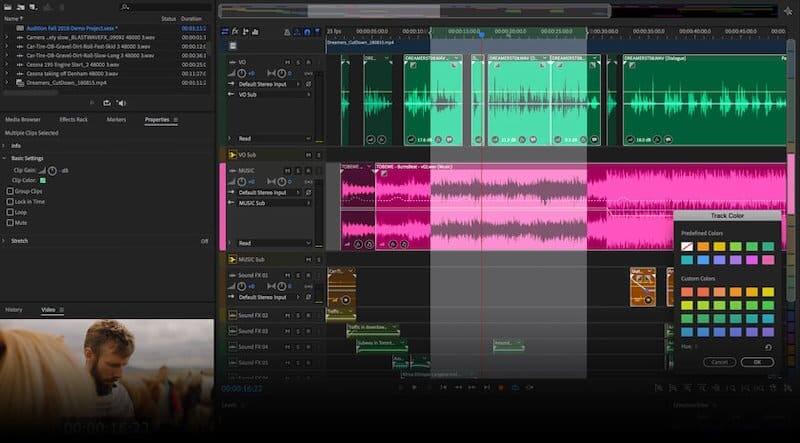
Choosing the right audio editing software is crucial if you want to produce high-quality audio recordings. From simple sound effects to complex audio editing, the best audio editing software can help you meet your goals. In this guide, I ranked and reviewed the 15 best audio editing software, along with my top 5 choices, so that you can pick the best one for you.
Adobe Audition, part of Adobe Creative Cloud (CC), is a suitable tool for broadcasters who want to edit, mix, and restore audio.
Pro Tools is one of the best professional audio editing software for large studios looking to integrate hardware with powerful software.
Studio One is an excellent, super-responsive, and agile audio editing tool for recording voice and laying down stunning beats.
Audacity is one of the best open-source and cross-platform audio editing tools for multi-track editing and recording.
Steinberg Cubase is a powerful audio editing software for users who want to create, mix, and produce music.
We’re reader-supported. When you buy through links on our site, we may earn an affiliate commission.
Want to jump straight to the best audio editing software right now? My favourite is Adobe Audition.
Professional audio production has come a long way in the last decade. What used to take expensive digital audio workstations (DAWs) and recording studios can now be completed with just a laptop and microphone.
And oftentimes, audio quality is more important than video quality. Sometimes a shaky or less-than-perfect video clip can be improved by professional audio. However, poor audio is much more noticeable and hard to improve with a well-shot video.
However, when looking for the best tool, there are so many audio editing software options to choose from – it can get overwhelming.
I remember editing a video together and being unable to fix a poorly recorded audio track. I scoured the internet for hours trying to find a tool that could easily get rid of background hums and p-pops.
After researching tools late into the night, I finally found one that I was looking for.
This guide covers the best audio editing software for musicians, video editors, podcasters, and everything in-between.
Let’s get started.
Here are my top picks for the best audio editing software.
Best audio software for video editors ($20.99 per month).
Adam’s Take
Whether you want to create a podcast, add sound effects to a video, or clean up some audio recordings, Adobe Audition has features to help you get the job done. Being part of CC, it also integrates well with other Adobe tools like After Effects and Premiere Pro.
Best For
Price
Annual Discount
Promotion
Adobe Audition, part of Adobe Creative Cloud (CC), is a suitable tool for broadcasters who want to edit, mix, and restore audio. You can use Adobe Audition for both single and multi-track editing. It also lets you import files in the timeline through a simple drag and drop feature, which is a bonus for beginners. Its visual interface is modern and straightforward which helps you focus on optimizing your audio tracks.
It also brings professional depth to the sounds effects you create.

Adobe Audition provides different types of textures for sound effects, such as:
What’s more, Adobe Audition enables you to easily perform noise reduction. You just need to create a ‘noise print’ at a particular point in the audio, and it will replicate the background in the entire clip. You can also get rid of an unwanted echo with just a click of a button. It’s also one of the audio editing tools to let you include the recordings of multiple resources in a single track.
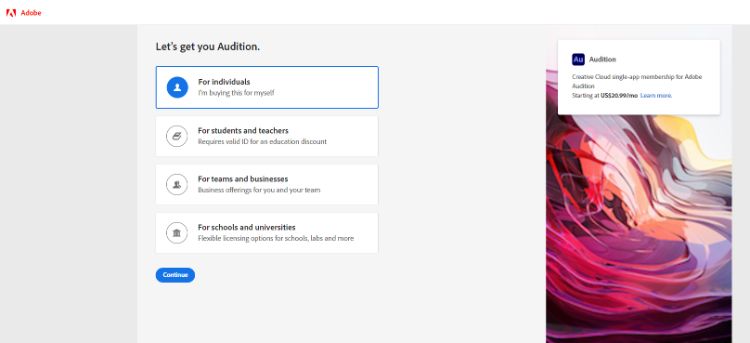
It provides discounts to students and teachers. The companies that require multiple licenses also get special discounts.
Best for post-production professionals ($29.99 per month).
Adam’s Take
For large studios with big budgets, Pro Tools is the industry standard. The software integrates with a wide range of hardware from different manufacturers, making it the most versatile option for professionals. I advise you to check it out if you’re after one of the best tools in the game.
Best For
Price
Annual Discount
Promotion
Pro Tools is one of the best professional audio editing software for large studios looking to integrate their hardware with powerful software. Moreover, Pro Tools offers a powerful workflow, letting you record for up to 4 mics simultaneously. Its Audio Engine offers a 64-bit architecture, capable of dynamically allocating host processing resources, and low-latency input buffer.
It also allows you to search through instruments, tracks, and more through a type-ahead search. Plus, you can now select multiple items on the menu at a time. One of its most amazing features is its capability to record the sound retroactively. This means that you don’t have to remember to press the record button whenever you start jamming in the studio. Pro Tools also offers a good collection of virtual instruments.
The distribution of music also gets easier with Pro Tools. It gets your music on streaming sites like Apple Music, Spotify, Amazon Music, iHeartRadio, and more.
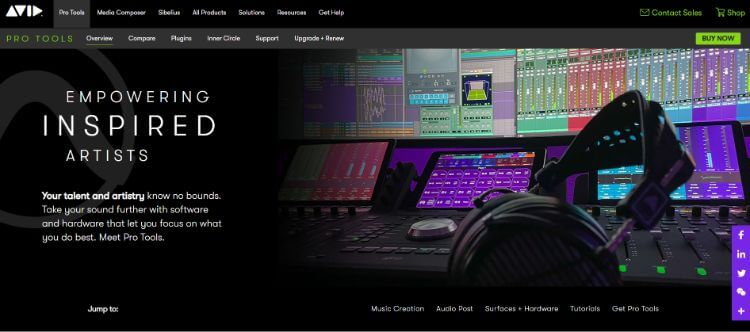
Here are some of the features that let you produce professional, movie-quality sound.
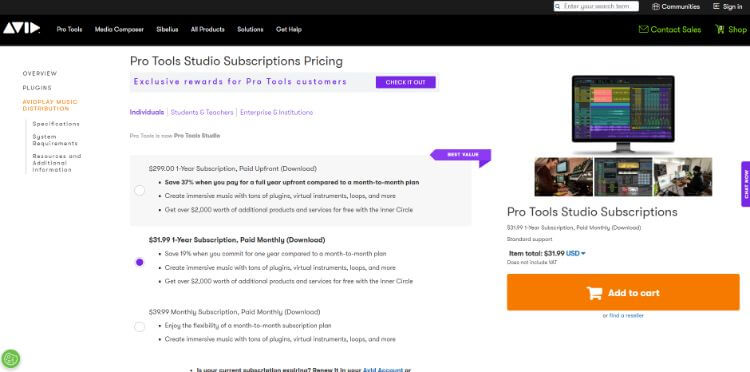
Pro Tools offers two pricing plans:
Suitable for professionals looking for a serious DAW for creating, editing, mixing, and mastering audio ($449).
Adam’s Take
If you’re a fan of beats that snap and pop with lots of character, you’ll love what Studio One can do. Studio One comes with a great collection of effects and plugins to get you started, so I recommend you to check it out if you’re looking for a top-quality audio editor.
Best For
Price
Annual Discount
Promotion
Studio One is an excellent audio editing tool for recording voice and laying down stunning beats. It’s super-responsive and agile. For instance, its drag-and-drop interface lets you set up instruments instantly with complete pictorial representation.
The drag-and-drop interface lets you achieve plenty of other essential functions easily, such as:
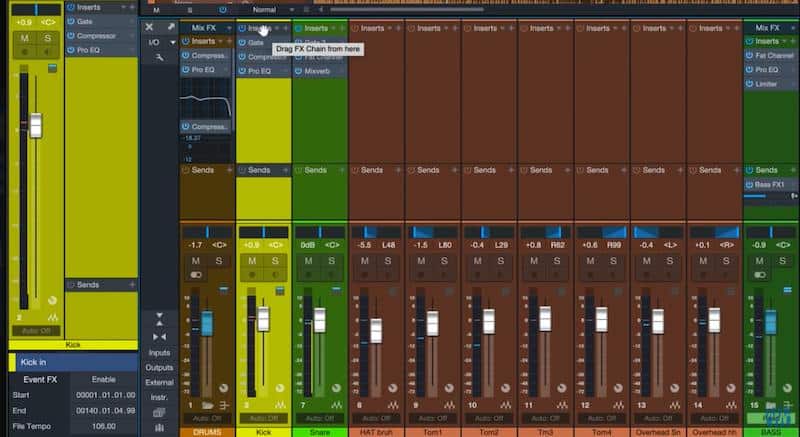
Other than this, it has all the editing functions one would expect in an efficient digital audio workstation (DAW). You can add fades, trim or split clips, and adjust the gain of a clip straight from the ‘Edit’ interface.
Plus, it automatically suggests dates and names to your new projects to help you always stay organized. You can also set keyboard shortcuts to mirror Pro Tools or any other DAW for easy migration to Studio One.
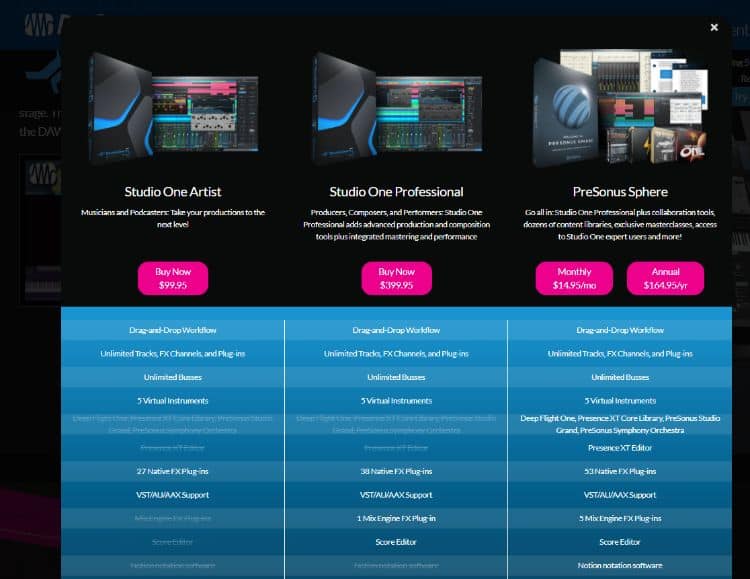
Studio one costs $399.95 for a one-time purchase. You can also upgrade for more advanced features.
There are also the Studio One Artist, selling for $99.95, and the PreSonus Sphere, with a monthly subscription of $14.95 or an annual one for $164.95.
Open-source audio editing software for multi-track editing (Free Audio Editor).
Adam’s Take
Renowned for being a free yet powerful tool, Audacity comes packed with features such as support for a wide range of file formats, support for multiple audio effects, and more. With Audacity, you can easily record and edit audio files on your computer and even add effects to them.
Best For
Price
Annual Discount
Promotion
Audacity is one of the best open-source and cross-platform audio editing tools for multi-track editing and recording. It offers a user-friendly interface and supports macOS, Windows, GNU/Linux, and many other operating systems. Plus, you can record live audio through a microphone/ mixer, and digitize audio recordings from other media.
Audacity also superior quality sound with 16-bit, 24-bit, and 32-bit support. Other than this, it converts formats and sample rates through high-quality dithering and resampling. It also supports LADSPA, Nyquist, LV2, VST, and Audio Unit effect plugins. If none of these plugins align with your requirements, you can write your own plugins too.
Here’s a list of some of the most prominent features that make it one of the best free audio editing software:
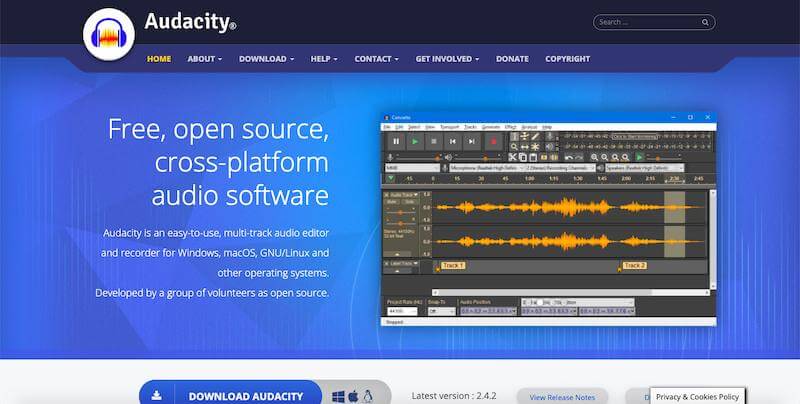
Suitable for both a professional composer or a music production beginner ($329.99).
Adam’s Take
I advise you to check out Cubase for its various features and capabilities. Cubase offers its users a wide range of editing options. You can use Steinberg Cubase to create, record, mix, and produce music, so it’s worth checking out if you’re serious about audio editing.